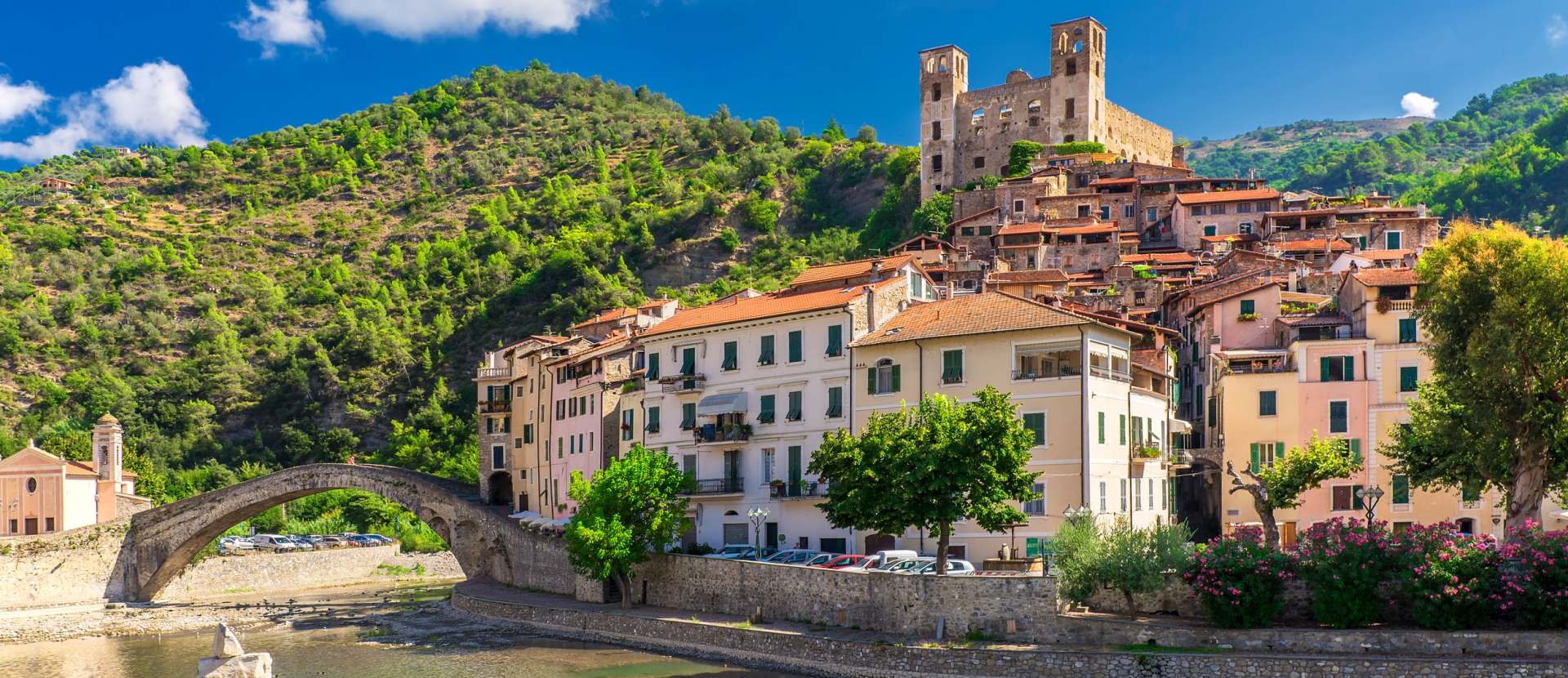Why Monet Fell in Love with Dolceacqua, Italy
Impressionist painter Claude Monet is renowned for his French subjects, from his water lilies at Giverny and the Rouen Cathedral to his many landscapes. But in 1884, it was Italy that enthralled the artist. Specifically, he became captivated by Dolceacqua, the magical medieval village just 12 miles over the border on the Italian Riviera. He found a new subject there: the Ponte Vecchio, the Old Bridge that spanned the Nervia River.
His enchantment is easy to understand. The bridge forms such a graceful arc across its 100 feet that it seems to float there between the river’s banks. To the painter, who sought to depict the poetic beauty of everyday vistas, the scene must have been spellbinding. Perhaps even more so because the structure had been built some 400 years before; it had withstood the passage of time, despite that it seemed to defy gravity.
How Monet Came to Italy
Dolceacqua, one of Italy’s official “most beautiful villages,” rests at the base of Mt. Rebuffao in Italy’s stunning Liguria province. Monet first discovered Dolceacqua during an 1883 summer jaunt with his friend, compatriot, and fellow Impressionist Auguste Renoir. He immediately fell in love with the compelling perspectives and visuals offered up by the village’s narrow, cobbled lanes and the watchful twin towers of Doria Castle above.
But it was the Ponte Vecchio that engaged his painter’s eye most. “Claude Monet was so captivated by this place that he had to paint it,” says Francesca Assandri, a local Country Walkers guide and partner in the region. After his travels with Renoir, he plotted his return.
He arrived—with painting supplies in tow—in January of 1884, about six months after his trip with Renoir. During his second visit, he stayed in nearby Bordighera, some six miles away on the coast. Once in Dolceacqua, he perched himself before the Ponte Vecchio and lost himself in its beauty for hours, as only a painter would, observing the shifting light and shadow.
The result was Bridge at Dolceacqua, a sublime depiction in greens, blues and ochres. It would be another 15 years before the master painted his more famous bridge—the one that arches over the lily pond at Giverny—in his celebrated Water Lily series.
In his writings, Monet called the Ponte Vecchio “a jewel of lightness.” And it’s all there in the painting: the rise and fall of the bridge in an arch that seems to hover, its stone-like colors merging with the hills behind. Today, Bridge at Dolceacqua is part of the permanent collection at the in the Clark Art Institute in Williamstown, Massachusetts.
The Seductions of One of Italy’s Most Beautiful Villages
The Ponte Vecchio is not the only reason to visit Dolceacqua, of course. The bridge links Borgo (the “new” town of Dolceacqua) to the old part of the village, which locals call Terra. The Old Town’s caruggi, or steep narrow streets, lead to quaint shops, inviting cafés, intimate courtyards, vaulted passageways, and potted plants alongside the colorful doors of local Ligurians. It is pure pleasure to wander and explore this delightful maze of stone and shadow, perfectly complemented by a break to sip a glass of local, ruby-red Rossese wine, sample the Taggiasche olives grown in the hills, or munch on the traditional, sugar-dusted Dolceacqua cookie, the michette.
At the village’s apex, the twin towers of Doria Castle still watch over visitors. And at the foot of the Ponte Vecchio, a plaque marks the spot where Monet created his masterwork.
Step into Monet’s painting when you visit Dolceacqua during our France & Italy: Nice to Genoa Walking Adventure.

